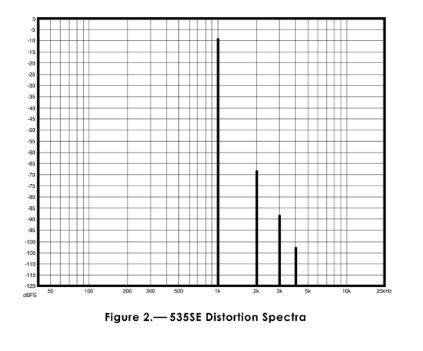http://www.dolphin-hsl.com/articles/distortion.html
"If the THD is several percent, but it is all h2, you probably won't notice it at all. It is this type of distortion that low-u triodes tend to produce. On the other hand, even very small amounts of high order harmonics can be all but unlistenable"
"The least harmful is h2. Since the second harmonic is musically correlated, being one octave higher, it tends to make for a "richer" sound. Excessive amounts tend towards a "darker" sound, as has been the complaint against the very nonlinear 12AV7. From a design point of view, this would not look like too much of a problem, since even order harmonics are nulled with balanced circuitry. As for h3, this, too, is musically correlated, being nearly an octave-and-a-half. The effect of h3 is to lend a sense of "detail". More h3 lends "edge" or "brightness" to the sound. For some types of music, this can be desirable. As for higher order harmonics, these aren't musically correlated, and sound very dissonant and unpleasant. The higher order the harmonic, the less of it you can tolerate"
"Fifty or so years ago, Norman Crowhurst proposed a weighting system of distortion measurement that would account for this: undervaluing the less destructive low order harmonics, and emphasizing the higher order harmonics. Simple THD measurements don't do this. Of course, the industry wanted nothing to do with it."
"All IMD is quite bad since its frequency components are rarely, if ever, musically correlated. This is the reason to stay away from nonlinear devices and nonlinear operating points. "
"The simplistic answer is to add as much NFB as you can manage while maintaining a reasonable level of stability. Unfortunately, it's not that easy. Over fifty years ago, Norman Crowhurst looked into the problem, and discovered that the main effect of NFB is the reduction of h2 and h3. It doesn't do much, if anything, for removing low levels of higher order harmonics. NFB can make the situation even worse by filling the noise floor with lots of low level, high order harmonics. This can, and does, ruin any pretense to sound stage. "








